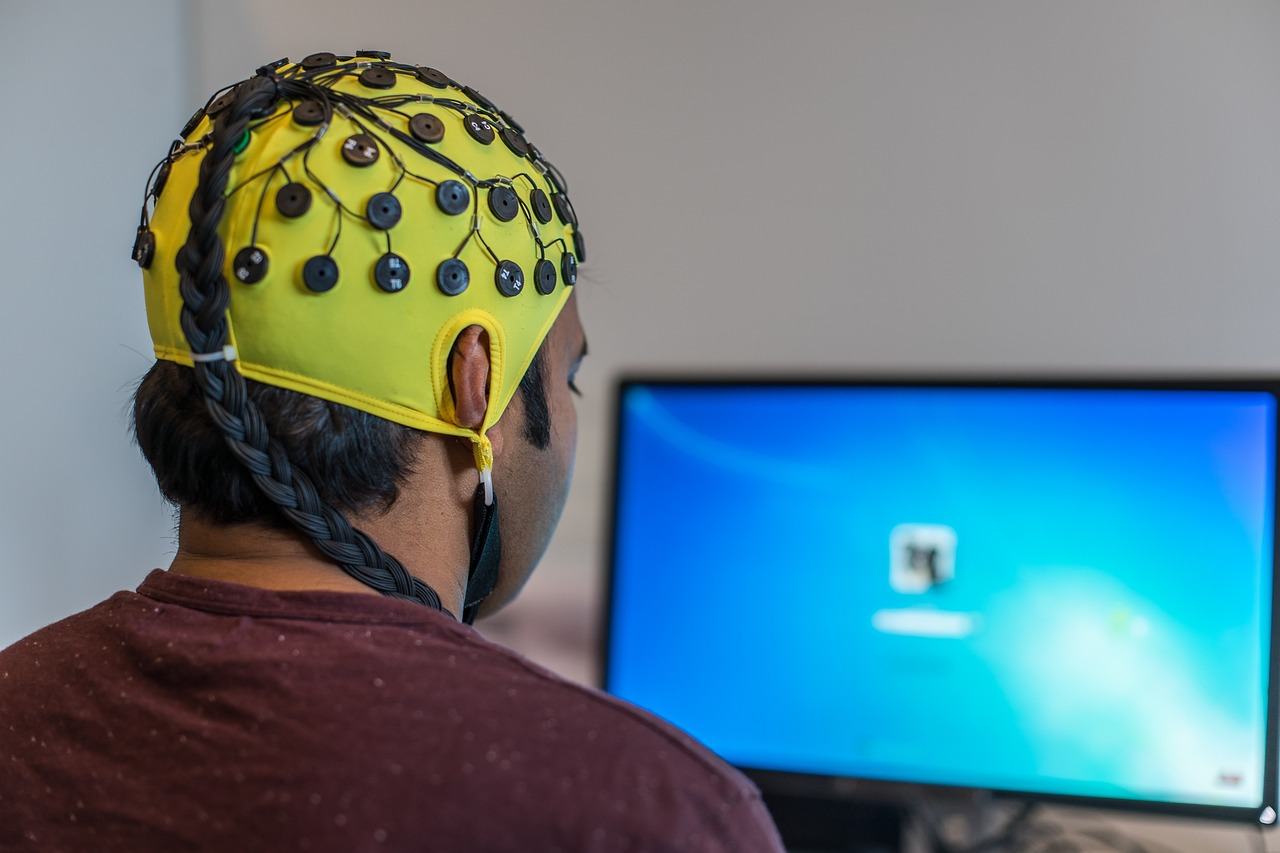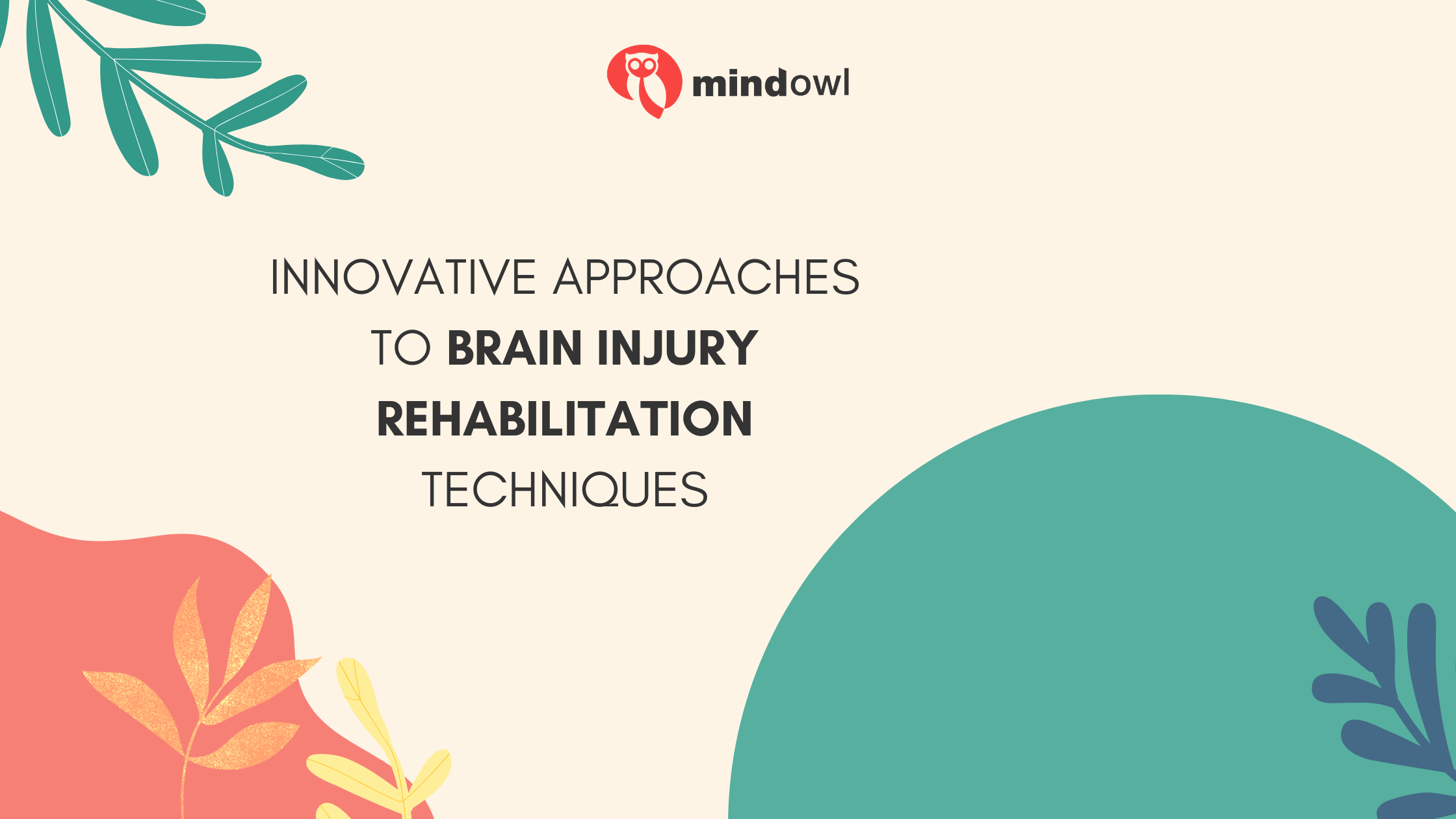
Getting your life back after a brain injury is tough work.
Every year, 2.8 million Americans sustain brain injuries, and the path to recovery can feel overwhelming. The good news? Brain injury rehabilitation is experiencing a revolution.
Here’s what’s changing:
New technologies are making recovery faster, more effective, and surprisingly engaging. From virtual reality systems that make therapy feel like gaming to robotic devices that help retrain damaged neural pathways — innovative approaches are transforming how we think about brain injury rehabilitation.
What you’ll discover:
- Virtual Reality: Making Therapy Feel Like Play
- Robotic Rehabilitation: The Future is Here
- Brain-Computer Interfaces: Mind Over Matter
- Multimodal Approaches: The Power of Combination
Virtual Reality: Making Therapy Feel Like Play
Want to know what’s getting brain injury patients excited about rehabilitation?
Virtual reality is changing everything. Instead of boring, repetitive exercises, patients now dive into immersive worlds where therapy becomes an adventure.
Here’s how VR is revolutionizing rehabilitation:
Traditional therapy can feel monotonous. Patients lose motivation quickly. VR solves this by creating engaging environments where rehabilitation exercises become interactive experiences.
Studies show that VR-based cognitive rehabilitation provides measurable improvements in attention, memory, and executive function. When patients look into brain health services that incorporate VR technology, they’re accessing cutting-edge treatment that combines entertainment with evidence-based therapy.
The beauty of VR rehabilitation lies in its adaptability. Therapists can adjust difficulty levels in real-time, create customized scenarios that match each patient’s specific needs, and track progress with unprecedented precision.
VR applications include:
- Cognitive training through immersive problem-solving games
- Motor skill rehabilitation using virtual environments
- Balance and coordination training with safe, controlled scenarios
- Anxiety reduction through calming virtual experiences
But there’s more to this technology than meets the eye…
Robotic Rehabilitation: The Future is Here
The integration of robotics into brain injury rehabilitation is creating opportunities that seemed impossible just a few years ago.
Robotic devices provide consistent, precise movements that help retrain damaged neural pathways. Unlike human therapists who can get tired, robots deliver the same quality of assistance for hours.
The advantages are clear:
Robotic exoskeletons support patients during movement training, allowing them to practice walking and arm movements even when their muscles are too weak to function independently. This early intervention is crucial because neuroplasticity — the brain’s ability to rewire itself — is highest in the months following injury.
Current robotic systems include upper limb devices that guide arm movements, lower limb exoskeletons that assist with walking, and end-effector robots that help with specific motor tasks. Each type addresses different aspects of recovery.
Research shows impressive results:
Recent studies demonstrate that robot-assisted therapy significantly improves motor function scores compared to traditional therapy alone. Patients using robotic devices show faster recovery times and better long-term outcomes.
The technology also provides objective measurement of progress. Sensors track movement patterns, strength improvements, and coordination gains with scientific precision. This data helps therapists adjust treatment plans and provides patients with clear evidence of progress.
Brain-Computer Interfaces: Mind Over Matter
Brain-computer interfaces represent the cutting edge of rehabilitation technology.
These systems read electrical signals directly from the brain and translate them into commands for external devices. For brain injury patients, this technology offers hope for bypassing damaged neural pathways entirely.
How it works:
Patients wear electrodes that detect brain signals associated with intended movements. These signals are processed by computers and used to control robotic devices, computer programs, or even paralyzed muscles through electrical stimulation.
The applications are remarkable. Patients with severe motor impairments can control computer cursors with their thoughts, operate robotic arms, or trigger functional electrical stimulation to move their own limbs.
Current developments include:
- EEG-based systems that don’t require surgery
- Real-time feedback that helps patients learn to control their brain signals
- Integration with robotic devices for seamless mind-machine interaction
The field is advancing rapidly.
Multimodal Approaches: The Power of Combination
The most exciting developments in brain injury rehabilitation combine multiple technologies into comprehensive treatment programs.
Why combination therapy works:
Different technologies address different aspects of recovery. VR engages cognitive functions, robotics supports motor training, and brain-computer interfaces provide direct neural feedback. When used together, these approaches create synergistic effects that exceed the sum of their parts.
Modern rehabilitation centers are integrating these technologies into unified treatment protocols. Patients might start with VR-based cognitive training, transition to robotic-assisted movement therapy, and finish with brain-computer interface training.
The benefits multiply:
- Faster recovery times through intensive, varied stimulation
- Better patient engagement through diverse, interactive experiences
- More comprehensive treatment addressing multiple impairments simultaneously
Research indicates that patients receiving multimodal rehabilitation show significantly better outcomes than those receiving single-mode therapy.
Personalized Rehabilitation: The Individual Approach
No two brain injuries are exactly alike, so why should rehabilitation be one-size-fits-all?
The future of brain injury rehabilitation lies in personalized treatment protocols that adapt to each patient’s unique injury pattern, recovery stage, and personal goals.
Advanced assessment tools now enable:
- Detailed mapping of brain damage using advanced imaging
- Real-time monitoring of neural activity during therapy
- Customized therapy protocols based on individual brain patterns
Artificial intelligence is increasingly being used to analyze patient data and recommend optimal treatment approaches. Machine learning algorithms can identify patterns in recovery that human therapists might miss, leading to more effective interventions.
The results speak for themselves:
Patients receiving personalized rehabilitation protocols show improved functional outcomes and faster recovery times. While 85-90% of mild TBI patients recover fully within three months, personalized approaches are helping more patients achieve optimal outcomes.
Accessibility and Implementation Challenges
Despite these advances, significant challenges remain in making innovative rehabilitation techniques widely available.
Advanced technologies require substantial investment and specialized training. Many rehabilitation centers struggle to afford these technologies, creating disparities in access.
Telerehabilitation is emerging as a solution. Remote monitoring systems allow patients to use simplified versions of rehabilitation technologies at home, with therapist supervision via video calls.
The Recovery Statistics Tell the Story
The data on brain injury rehabilitation outcomes is both challenging and encouraging.
While 22% of concussion patients experience ongoing symptoms over a year past injury, innovative rehabilitation approaches are improving these statistics.
Current recovery rates show:
- 82% of moderate to severe TBI survivors regain consciousness during inpatient rehabilitation
- 90% of patients with moderate to severe disability report rehabilitation needs
The gap between need and access remains significant, but innovative technologies are helping bridge this divide.
Looking Forward: The Next Frontier
The future of brain injury rehabilitation is being written today.
Emerging technologies promise even more dramatic improvements in recovery outcomes. Nanotechnology, gene therapy, and advanced neural interfaces are on the horizon.
What’s coming next:
- Biomarker-guided therapy selection
- Pharmacological enhancement of neuroplasticity
- Advanced brain organoids for testing new treatments
The field is evolving rapidly.
Wrapping Up the Innovation Story
Brain injury rehabilitation is experiencing a technological revolution transforming recovery outcomes for millions of patients.
From virtual reality systems that make therapy engaging to robotic devices that provide precise motor training, innovative approaches are changing what’s possible in brain injury recovery.
The key takeaways:
- Technology is making rehabilitation more effective and engaging
- Combination therapies provide synergistic benefits
- Personalized approaches optimize outcomes for individual patients
- Access challenges remain, but telerehabilitation offers solutions
For patients and families facing brain injury recovery, staying informed about these innovations and seeking centers that offer cutting-edge treatments can make a significant difference.
The future of brain injury rehabilitation is bright, with technologies expanding possibilities for recovery.
MindOwl Founder – My own struggles in life have led me to this path of understanding the human condition. I graduated with a bachelor’s degree in philosophy before completing a master’s degree in psychology at Regent’s University London. I then completed a postgraduate diploma in philosophical counselling before being trained in ACT (Acceptance and commitment therapy).
I’ve spent the last eight years studying the encounter of meditative practices with modern psychology.

